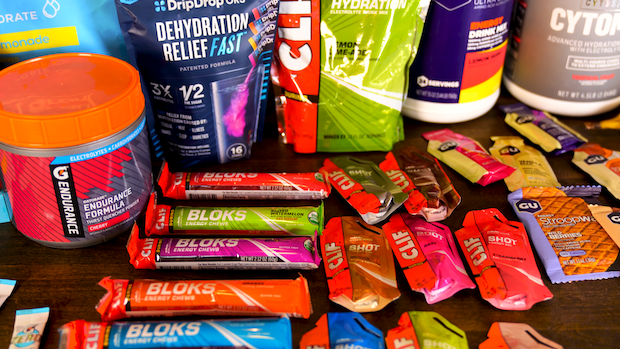Deciphering Carb Nutrition Facts

If you’ve ever tried to figure out how much of what exactly you’re consuming when you consume FuelDrink SuperNova 2.0, you’re probably slightly on the nerdy side. But maybe wise, too. Turns out, sugar ratios matter, especially when you’re targeting a high-carb fueling approach. Get it wrong, and you might end up believing that carb consumption rates over about 60 grams per hour during endurance training or racing just aren’t for you.
It’s probably not the total intake rate that’s your problem.
Refresher: intake = consumption. Uptake = how much makes it from your gut to your bloodstream, and that’s what matters for performance.
So, let’s say you’ve learned that you ought to target a 2:1, or a 1:0.8, or a 1:1 ratio for your endurance fuel mix, and you want to evaluate a product. That product might not disclose their ratio on the package. Here’s how to do it.
First, check total carbs, then look at added sugars, then review the ingredients list. Remember that ingredients listed after another are never present in greater quantity than the ingredient listed before them. It’s also handy to remember that salts, flavorings, etc, are usually included at very low amounts, so if there are carb ingredients listed after those salt names, flavorings, preservatives, etc, they can pretty much be ignored.

Let’s walk through an example. Call it Product A.
Product A has 40 grams of carbs per serving. 30 grams of “added sugars” are listed in the nutrition facts.
The ingredients read as follows:
- organic non-GMO super-duper-natural cane sugar
- Maltodextrin
- salt
- dextrose
- sodium citrate
- natural flavors
- citric acid
How much glucose and fructose do we have? Good news! On this one we can figure it out, probably to within a gram.
Maltodextrin always counts as a non-sugar carb. Dextrose and sugar (sucrose), no matter how many fancy words they put before it, will always be considered an added sugar, as far as the nutrition label is concerned.
So, 40 minus 30 gives us 10 grams of carb that have to come from maltodextrin, because there are no other carb sources that would be counted as a non-sugar carb. The dextrose was listed after salt, and there’s never more than a gram of sodium in a serving of a product so it’s a safe assumption that there is less than a gram of dextrose in this product and we can just ignore it for simplicity.
That means the 30 grams of added sugars are all sucrose (AKA organic non-GMO super-duper-natural cane sugar)
So, we’ve got 10 grams maltodextrin, plus 30 grams sucrose. Sucrose is 50-50 glucose & fructose, for Product A are 15 grams of each. Maltodextrin is purely a glucose contributor, so that adds 10 more grams of glucose, on top of the 15 grams contributed by sucrose.
Our totals are now 25 grams of glucose and 15 grams of fructose. A 3:2 ratio. Not bad. Right between the 2:1 & 1:1 so probably could work as a primary carb source for most folks, most of the time.
If your head is spinning, you may like an upcoming feature of this app. It will eventually calculate glucose fructose ratios for you. For now, read labels carefully, and take solace in the fact that it does NOT need to be exact. You can get it a little wrong and still end up fine. The reason so many people believe it’s a huge and ongoing trial and error process is that they’re not starting with the science first. They’re intuiting their way to success, which may eventually get you there, but it’s a very roundabout and sometimes painful path. Following the science will certainly be less painful.


Start the discussion at slowtwitch.northend.network